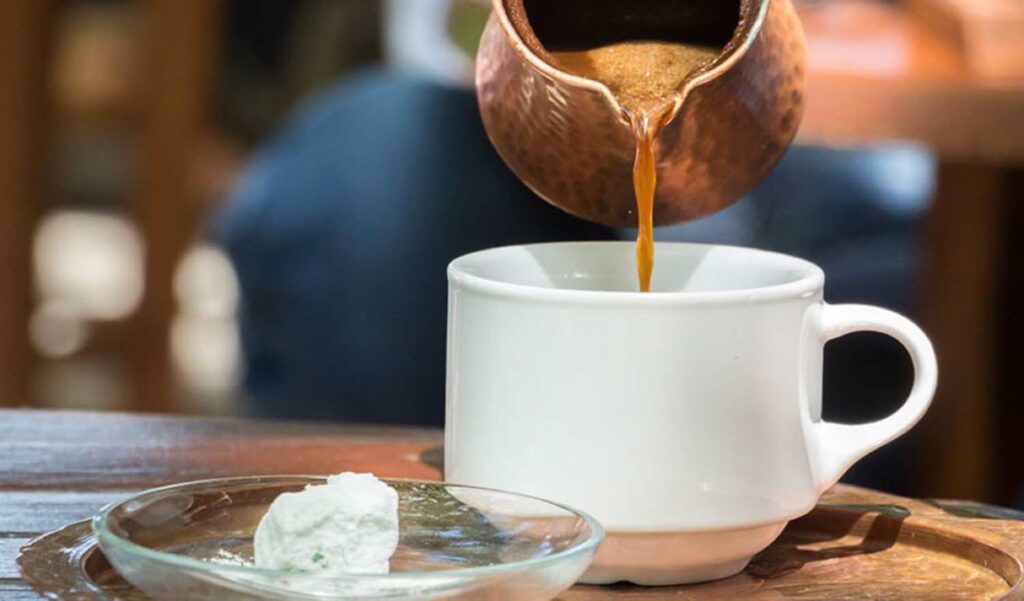What Exactly is a Siozinis?
Pronounced see-oh-zee-NEES, this whimsical word refers to the thick, velvety layer of coffee grounds that settle at the bottom of a Greek coffee cup. It is the sediment, the dregs, the final product of a brewing process that is as much about alchemy as it is about caffeine.
Unlike filtered coffee, Greek coffee is prepared by boiling finely ground coffee beans directly in water, traditionally in a small, long-handled pot called a briki. Sugar is added during the boiling process (according to the drinker’s preference), and the goal is to achieve a rich kaimaki—the creamy, frothy head that crowns a perfectly made cup. Once poured, the grounds slowly descend, forming the siozinis—a soft, dense layer that is strictly not to be drunk.
More Than Just Grounds: A Cultural Artifact
To call the siozinis mere “waste” is to miss its profound cultural significance. It is a boundary, a natural indicator that your coffee experience has reached its conclusion. Drinking it would be a culinary faux pas, resulting in a mouthful of gritty, bitter sludge. Its presence is what makes the entire method possible, allowing for the full-bodied, intense flavor that defines Greek coffee.
This layer is so integral to the experience that it has inspired a unique piece of dinnerware: the Greek coffee cup itself. These small, sturdy cups, often made of porcelain and featuring a narrow base, are designed specifically to contain the siozinis, keeping it compact and away from the lips of the drinker.
The Siozinis and the Art of Divination
Perhaps the most fascinating aspect of the siozinis is its second life after the coffee is gone.
The ritual is a social and mystical tradition, often shared among friends and family. After letting it cool, the cup is handed to a fortune teller.
The interpreter “reads” the patterns, shapes, and symbols left by the trails of the siozinis on the white interior walls of the cup. These images—which might look like animals, letters, objects, or natural formations—are then woven into a narrative. Lines near the rim might signify the immediate future, while those at the bottom represent more distant events.
In this context, the siozinis transforms from a simple byproduct into a tool for introspection, conversation, and connection. It’s a prompt for storytelling and a cherished, light-hearted cultural game.
A Symbol of Unhurried Time
In a world of espresso shots and on-the-go lattes, the Greek coffee ritual, anchored by the siozinis, demands slowness. You cannot rush a Greek coffee.
Conclusion: Honoring the Grounds
Siozinis is a word that encapsulates a deeper philosophy. It represents the acceptance of the entire process, grounds and all. It is the essential, humble foundation that makes the pleasure of the drink above it possible.

